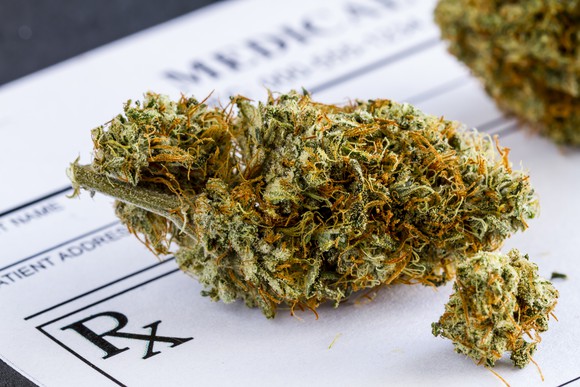Alternative non-smoking ways for patients to use medicinal marijuana

The medicinal use of marijuana is now legal in a growing number of U.S. states, and other states might eventually join this list. Some patients, however, might be unable to smoke medical marijuana because of their illness, disease, symptoms, treatments and/or other factors. This article explores the alternatives to smoking marijuana that might prove healthier or more viable for patients who’ve received a prescription for medical marijuana.
Marijuana Use for Medicinal Purposes
Requiring a doctor’s prescription and secured from legal vendors, medical marijuanacan help relieve numerous symptoms, such as pain, glaucoma, migraine headaches,nausea and weight loss.
While there are various pros and cons to using medical marijuana, it’s important to understand that the use of marijuana is not without potential side effects. For example, conventional or “street” marijuana might contain harmful fungus and/or pesticides, which can prove especially dangerous for patients with a compromised immune system.
Moreover, the fact that marijuana is usually smoked — either in cigarette form, or through the use of tobacco or water pipes — introduces additional concerns. Burning marijuana leaves and buds, for example, can produce 50% to 70% more carcinogens versus traditional or “analog” tobacco cigarettes. In addition, patients who have never smoked before, or those receiving other treatments that can interfere with their ability to smoke, might find smoking marijuana difficult or simply impossible.
I found that to be a case with a patient with whom I once worked:
Mr. C was a 79-year-old man suffering from lung cancer and COPD. He suffered from chronic bone pain, nausea and severe weight loss. He asked his doctor about medical marijuana and received the necessary prescription. When I came to see him, he held a joint, but he didn’t know how to use it. It was immediately clear that because of his inexperience, and because he was using oxygen and was already suffering from a forceful cough, smoking a marijuana cigarette would not be the best method for him.
Alternative Non-Smoking Medical Marijuana Options
It’s important to again stress that medical marijuana is a physician-prescribed treatment and should only be used according to a doctor’s instruction. If you, or someone you care for, receives a prescription for medical marijuana use but cannot smoke marijuana, your non-smoking options might include:
Edible Marijuana: Medical cannabis can be heated and made into oils, butters and tinctures. Many “cannabis clubs” sell pre-made cookies, brownies, lollipops and teas. Savvy patients — those willing to take the time to empower themselves through research and knowledge — can also find recipes to make their own marijuana tincture, oil or butter.
Eating or drinking marijuana’s main or active ingredient tetrahydrocannabinol (THC) is certainly preferable to many patients rather than smoking it, but these alternative methods can also create problems. When consumed via food or drink, THC does not absorb into the bloodstream as quickly as when it is smoked.
This can make it more difficult to control the effectiveness of the drug or how much is consumed. In addition, patients who suffer from decreased appetite or nausea might not tolerate eating or drinking marijuana.
Vaporizers: Another option is to inhale marijuana using a vaporizer. This method involves heating the marijuana to a high enough temperature to vaporize the THC but not burn the plant. Patients can then breath in the vapor from a bag without inhaling the harsh and potentially toxic smoke.
Vaporizing marijuana is much healthier for your lungs and also produces the highest THC content of any smoking-related method. This allows patients to use a smaller quantity of marijuana at a time, which can potentially save money.
Vaporizers range from battery-powered, handheld devices to larger plug-in units. The quality and prices of marijuana vaporizers vary widely, so it is wise to shop around and read user reviews online before purchasing one.
Ultimately, my patient found a healthier alternative to smoking marijuana, too:
Mr. C experimented with edible marijuana. He found he enjoyed the marijuana brownies he was able to get at a cannabis club, but as his appetite waned, he found it difficult to stomach the rich chocolate taste. He didn’t want to invest in a vaporizer because his life expectancy was short. However, through the people he met at the cannabis club, he was able to strike a deal with another medical marijuana patient and split the cost of a vaporizer — with the agreement that the other patient would inherit the device after Mr. C’s death. It was an unusual arrangement, to be sure, but it allowed Mr. C to continue using medical marijuana for several more weeks.
Complete Article HERE!
